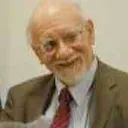Stay in the Loop
BSR publishes on a weekly schedule, with an email newsletter every Wednesday and Thursday morning. There’s no paywall, and subscribing is always free.
Sympathy for the harpsichord
Dolce Suono and 1807 & Friends

When Nathan Vickery played a Bach sonata for viola da gamba at Dolce Suono’s latest concert, he noted that he was playing the sonata on a modern cello, not the older instrument for which it was written. Although I’ve been a devotee of the period instrument movement for many decades, I don’t think Bach would have objected to the melodic, musical performance that followed those opening remarks. Vickery captured the soul of Bach’s music.
The sonata was the sixth entry in Dolce Suono’s annual concert devoted to Baroque music played on modern instruments accompanied by a harpsichord. As it turned out, the concert took place just a few days after the 1807 & Friends chamber group presented their annual concert devoted to Baroque music played on modern instruments accompanied by a harpsichord. The two concerts provided a good example of the compromises that musicians must make when they play music written for older, softer instruments on the more penetrating instruments developed for modern halls.
The harpsichord is the central problem. It tends to be overwhelmed by modern instruments, but it can’t be replaced. Its role in Baroque ensemble music requires a plucked instrument or a wind instrument such as a small organ.
The two groups played different versions of the harpsichord. At the Dolce Suono concert, Matthew Glandorf played a lightly strung historical replica. At the 1807 event, Davyd Booth played a 20th-century harpsichord with a stronger frame, higher tension on the strings, and a stronger voice.
The historical replica may be outgunned by modern winds and strings, but it produces a unique sound that’s similar (we assume) to the sound of the 18th-century harpsichords it copies. The high-strung 20th -century version penetrates the sound barrier thrown up by modern instruments, but it has a more metallic sound.
The historical harpsichord becomes an indistinguishable part of the sonic mix through most of a piece like the Bach viola da gamba sonata. During the intervals when the harpsichord played alone, on the other hand, its melodious, restrained voice sounded like a message from another world.
King Frederick’s challenge
Philadelphia may not be the music capital of the the Northern Hemisphere, but where else can hear one of Bach’s major works twice in one week? The two groups both scheduled the trio sonata from Bach’s Musical Offering — a group of pieces Bach composed on a theme suggested by the King of Prussia, Frederick the Great.
Personally I’ve never been impressed with this “royal theme.” To me it sounds like something Frederick doodled on the spot, at the beginning of Bach’s visit to his court. He challenged Bach to develop a three-voice improvisation, and Bach apparently obliged without working up a sweat. So Frederick asked for a six-voice improvisation. Bach admitted that would take a little thought and took up the challenge when he got home. The published version of his response includes the trio sonata and 11 shorter pieces, in addition to the six-part improvisation Frederick requested.
In the final movement of the trio sonata, the senior Philadelphia Orchestra musicians on the 1807 roster produced one of those Bachian interludes that make you intensely aware that all the musicians on the stage are doing something different at the same time and working like mad while they do it. Dolce Suono's younger musicians, by contrast, didn’t generate quite as much exuberance. But both groups provided convincing proof that you can probably hear the sonata three or four times in one week without getting tired of it. Like most of Bach’s best work, it resembles a book crowded with characters and incidents.
Sad but delightful
The soloist for the Dolce Suono affair was the mezzo-soprano Allegra De Vita, a resident artist at the Academy of Vocal Arts, who will spend next season with the Washington National Opera’s Domingo-Crafitz Young Artist Program. She sang five Baroque arias, in the process reinforcing the ancient truth that sad songs about love can be a pure delight when they’re sung in a full, colorful mezzo voice. For the finale, the rest of the cast joined her in a Vivaldi aria that placed a stream of vocal ornaments in a glittering instrumental setting.
The program notes mentioned that Allegra de Vita earned a bachelor’s degree in biology “with a concentration in neuroscience.” Presumably that has nothing to do with her musical abilities, but I find it heartwarming. My hopes for the future of our technological civilization rise a notch every time I learn that someone in the arts has studied a tough scientific subject.
What, When, Where
Dolce Suono: “Court and Country.” Bach Trio Sonata from The Musical Offering;’ Corelli, Trio Sonata in A Minor; arias by Handel, Purcell, Rameau, Vivaldi. Allegra De Vita, mezzo-soprano; Mimi Stillman, flute; Yiying Julia Li, violin; Nathan Vickery, cello; Matthew Glandorf, harpsichord. April 17, 2016 at Old Pine Street Presbyterian Church, 412 Pine St., Philadelphia. (267) 252-1803 or www.dolcesuono.com/tickets.
1807 & Friends: “1807 does 1708.” Caldara, Cello Sonata in A Major; D. Scarlatti, Harpsichord Sonata; Telemann, Flute Sonata; Bach, Trio Sonata from The Musical Offering; Locatelli, Violin Sonata, Op. 6, No. 5. April 11, 2016 at Academy of Vocal Arts. 1920 Spruce St., Philadelphia. (215) 438-4027 or (215) 978-0969 or www.1807friends.org.
Sign up for our newsletter
All of the week's new articles, all in one place. Sign up for the free weekly BSR newsletters, and don't miss a conversation.
 Tom Purdom
Tom Purdom